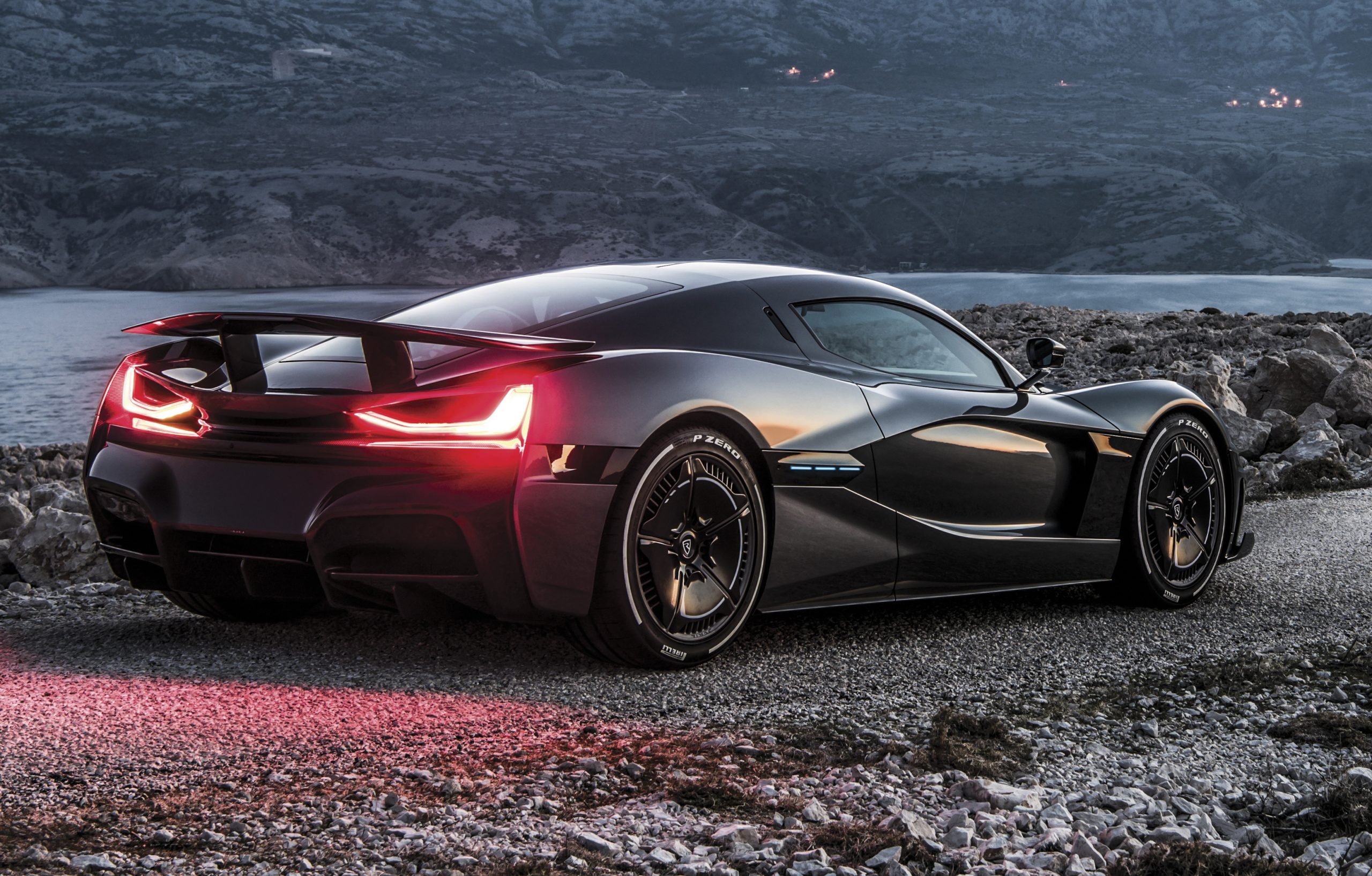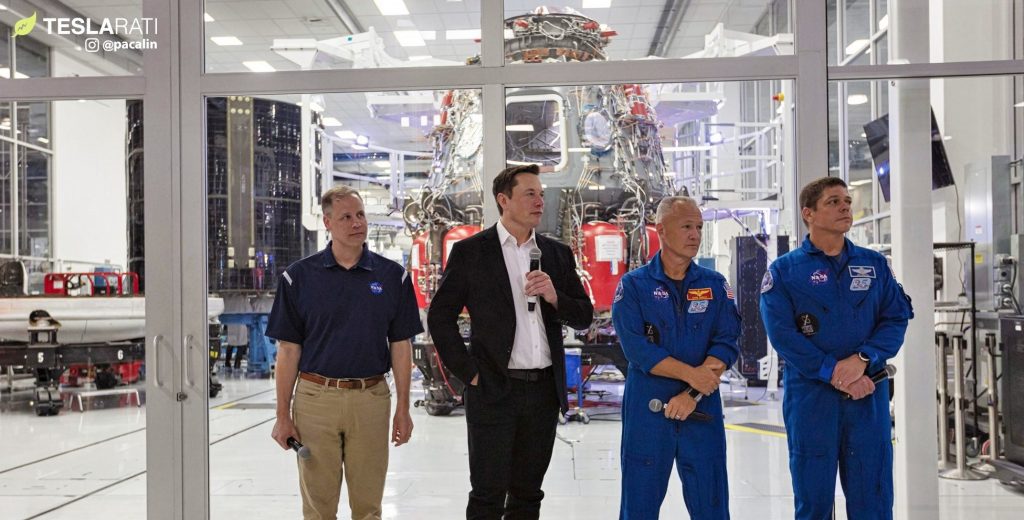

News
Rimac founder credits Elon Musk: ‘People don’t appreciate what he is doing for humanity’
Mate Rimac, the 31-year-old founder of hypercar maker Rimac Automobili and CEO of electric bike company Greyp, has created great waves in the all-electric vehicle segment. His vehicles are brutally fast just as they are exclusive, with Rimac’s first car, the Concept One, costing $2.1 million and having a very limited production run of eight vehicles. The company is now working on its second vehicle, the C_Two, one of the only upcoming production vehicles in the industry that can out-accelerate the base next-gen Roadster with its 0-60 mph time of 1.85 seconds.
Being one of Europe’s rising stars in the shift towards electrification, and being involved in both EV production and battery technologies, some publications have started dubbing the 31-year-old as the “Elon Musk of Europe.” It’s not really clear when the moniker was given to Rimac, but in a recent interview with Newsweek, the hypercar maker stated that he dislikes the unofficial title.
Rimac notes that ultimately, his company and Elon Musk’s electric car venture, Tesla, could not be any more different. Rimac Automobili is focused on hypercars that are extremely exclusive, while Tesla is fighting a bigger battle by attempting to breach the mass market. Ultimately, Rimac notes that Elon Musk’s projects, particularly those of SpaceX, are things that inspire people.

“I really respect Elon. I don’t like it when people say I am the ‘Elon Musk of Europe’ of whatever. I have never met the guy but I have huge respect for him. I think people don’t appreciate what he is doing for humanity. I think sending reusable rockets into space, wanting to conquer Mars and so on, it’s what inspires generations.
“It is what inspired people 40 or 50 years ago when we went to the Moon and nothing like that has been going on for years. And he is not doing that with somebody else’s money, it’s not the government, it’s a private enterprise. So I have huge respect for Elon,” he said.
In comparison, Rimac stated that his company is much smaller and much more focused on a smaller niche. Yet, despite this difference in scale, the hypercar maker maintained that Rimac Automobili remains a notable player in the transition towards sustainable transportation.
“We are a much smaller company. Obviously, the electric cars are connecting us but what he is doing and what we are doing is on a totally different scale and different impact. We are of course trying to do our part in the transition to a different kind of mobility, to a different kind of energy usage, from fossil fuels to electric and helping other car companies to go electric,” he said.

That being said, Rimac did state that he experienced some of the challenges that Elon Musk faced during the early days of Tesla. Among these, of course, was the argument that making electric vehicles was not a viable business. But at this point, the 31-year-old hypercar maker stated that electrification is simply a given. Gas-powered cars will likely still be around in the future, but they would likely be similar to horses, catering to a very small clientele.
“At the beginning, I think everybody thought I was crazy. Like making an electric supercar, why would you do that, nobody wants that, and so on. We are well beyond the point where people are like ‘this is not going to happen.’ I think everyone knows it’s going to happen. I think people don’t realize this is just one step and the bigger change, [which is] that drivers will become obsolete and ownership of cars will become obsolete.
“The question there is what happens to the sports car companies. I think sports car companies will still be relevant for the next few years, maybe a decade or two. Beyond that, there will for sure always be clientele who want the racehorses on closed courses and so on. If that is enough to keep all the sports car companies alive in the future… we shall see,” he said.

Elon Musk
Starlink passes 9 million active customers just weeks after hitting 8 million
The milestone highlights the accelerating growth of Starlink, which has now been adding over 20,000 new users per day.

SpaceX’s Starlink satellite internet service has continued its rapid global expansion, surpassing 9 million active customers just weeks after crossing the 8 million mark.
The milestone highlights the accelerating growth of Starlink, which has now been adding over 20,000 new users per day.
9 million customers
In a post on X, SpaceX stated that Starlink now serves over 9 million active users across 155 countries, territories, and markets. The company reached 8 million customers in early November, meaning it added roughly 1 million subscribers in under seven weeks, or about 21,275 new users on average per day.
“Starlink is connecting more than 9M active customers with high-speed internet across 155 countries, territories, and many other markets,” Starlink wrote in a post on its official X account. SpaceX President Gwynne Shotwell also celebrated the milestone on X. “A huge thank you to all of our customers and congrats to the Starlink team for such an incredible product,” she wrote.
That growth rate reflects both rising demand for broadband in underserved regions and Starlink’s expanding satellite constellation, which now includes more than 9,000 low-Earth-orbit satellites designed to deliver high-speed, low-latency internet worldwide.
Starlink’s momentum
Starlink’s momentum has been building up. SpaceX reported 4.6 million Starlink customers in December 2024, followed by 7 million by August 2025, and 8 million customers in November. Independent data also suggests Starlink usage is rising sharply, with Cloudflare reporting that global web traffic from Starlink users more than doubled in 2025, as noted in an Insider report.
Starlink’s momentum is increasingly tied to SpaceX’s broader financial outlook. Elon Musk has said the satellite network is “by far” the company’s largest revenue driver, and reports suggest SpaceX may be positioning itself for an initial public offering as soon as next year, with valuations estimated as high as $1.5 trillion. Musk has also suggested in the past that Starlink could have its own IPO in the future.
News
NVIDIA Director of Robotics: Tesla FSD v14 is the first AI to pass the “Physical Turing Test”
After testing FSD v14, Fan stated that his experience with FSD felt magical at first, but it soon started to feel like a routine.

NVIDIA Director of Robotics Jim Fan has praised Tesla’s Full Self-Driving (Supervised) v14 as the first AI to pass what he described as a “Physical Turing Test.”
After testing FSD v14, Fan stated that his experience with FSD felt magical at first, but it soon started to feel like a routine. And just like smartphones today, removing it now would “actively hurt.”
Jim Fan’s hands-on FSD v14 impressions
Fan, a leading researcher in embodied AI who is currently solving Physical AI at NVIDIA and spearheading the company’s Project GR00T initiative, noted that he actually was late to the Tesla game. He was, however, one of the first to try out FSD v14.
“I was very late to own a Tesla but among the earliest to try out FSD v14. It’s perhaps the first time I experience an AI that passes the Physical Turing Test: after a long day at work, you press a button, lay back, and couldn’t tell if a neural net or a human drove you home,” Fan wrote in a post on X.
Fan added: “Despite knowing exactly how robot learning works, I still find it magical watching the steering wheel turn by itself. First it feels surreal, next it becomes routine. Then, like the smartphone, taking it away actively hurts. This is how humanity gets rewired and glued to god-like technologies.”
The Physical Turing Test
The original Turing Test was conceived by Alan Turing in 1950, and it was aimed at determining if a machine could exhibit behavior that is equivalent to or indistinguishable from a human. By focusing on text-based conversations, the original Turing Test set a high bar for natural language processing and machine learning.
This test has been passed by today’s large language models. However, the capability to converse in a humanlike manner is a completely different challenge from performing real-world problem-solving or physical interactions. Thus, Fan introduced the Physical Turing Test, which challenges AI systems to demonstrate intelligence through physical actions.
Based on Fan’s comments, Tesla has demonstrated these intelligent physical actions with FSD v14. Elon Musk agreed with the NVIDIA executive, stating in a post on X that with FSD v14, “you can sense the sentience maturing.” Musk also praised Tesla AI, calling it the best “real-world AI” today.
News
Tesla AI team burns the Christmas midnight oil by releasing FSD v14.2.2.1
The update was released just a day after FSD v14.2.2 started rolling out to customers.

Tesla is burning the midnight oil this Christmas, with the Tesla AI team quietly rolling out Full Self-Driving (Supervised) v14.2.2.1 just a day after FSD v14.2.2 started rolling out to customers.
Tesla owner shares insights on FSD v14.2.2.1
Longtime Tesla owner and FSD tester @BLKMDL3 shared some insights following several drives with FSD v14.2.2.1 in rainy Los Angeles conditions with standing water and faded lane lines. He reported zero steering hesitation or stutter, confident lane changes, and maneuvers executed with precision that evoked the performance of Tesla’s driverless Robotaxis in Austin.
Parking performance impressed, with most spots nailed perfectly, including tight, sharp turns, in single attempts without shaky steering. One minor offset happened only due to another vehicle that was parked over the line, which FSD accommodated by a few extra inches. In rain that typically erases road markings, FSD visualized lanes and turn lines better than humans, positioning itself flawlessly when entering new streets as well.
“Took it up a dark, wet, and twisty canyon road up and down the hill tonight and it went very well as to be expected. Stayed centered in the lane, kept speed well and gives a confidence inspiring steering feel where it handles these curvy roads better than the majority of human drivers,” the Tesla owner wrote in a post on X.
Tesla’s FSD v14.2.2 update
Just a day before FSD v14.2.2.1’s release, Tesla rolled out FSD v14.2.2, which was focused on smoother real-world performance, better obstacle awareness, and precise end-of-trip routing. According to the update’s release notes, FSD v14.2.2 upgrades the vision encoder neural network with higher resolution features, enhancing detection of emergency vehicles, road obstacles, and human gestures.
New Arrival Options also allowed users to select preferred drop-off styles, such as Parking Lot, Street, Driveway, Parking Garage, or Curbside, with the navigation pin automatically adjusting to the ideal spot. Other refinements include pulling over for emergency vehicles, real-time vision-based detours for blocked roads, improved gate and debris handling, and Speed Profiles for customized driving styles.








